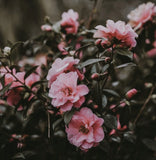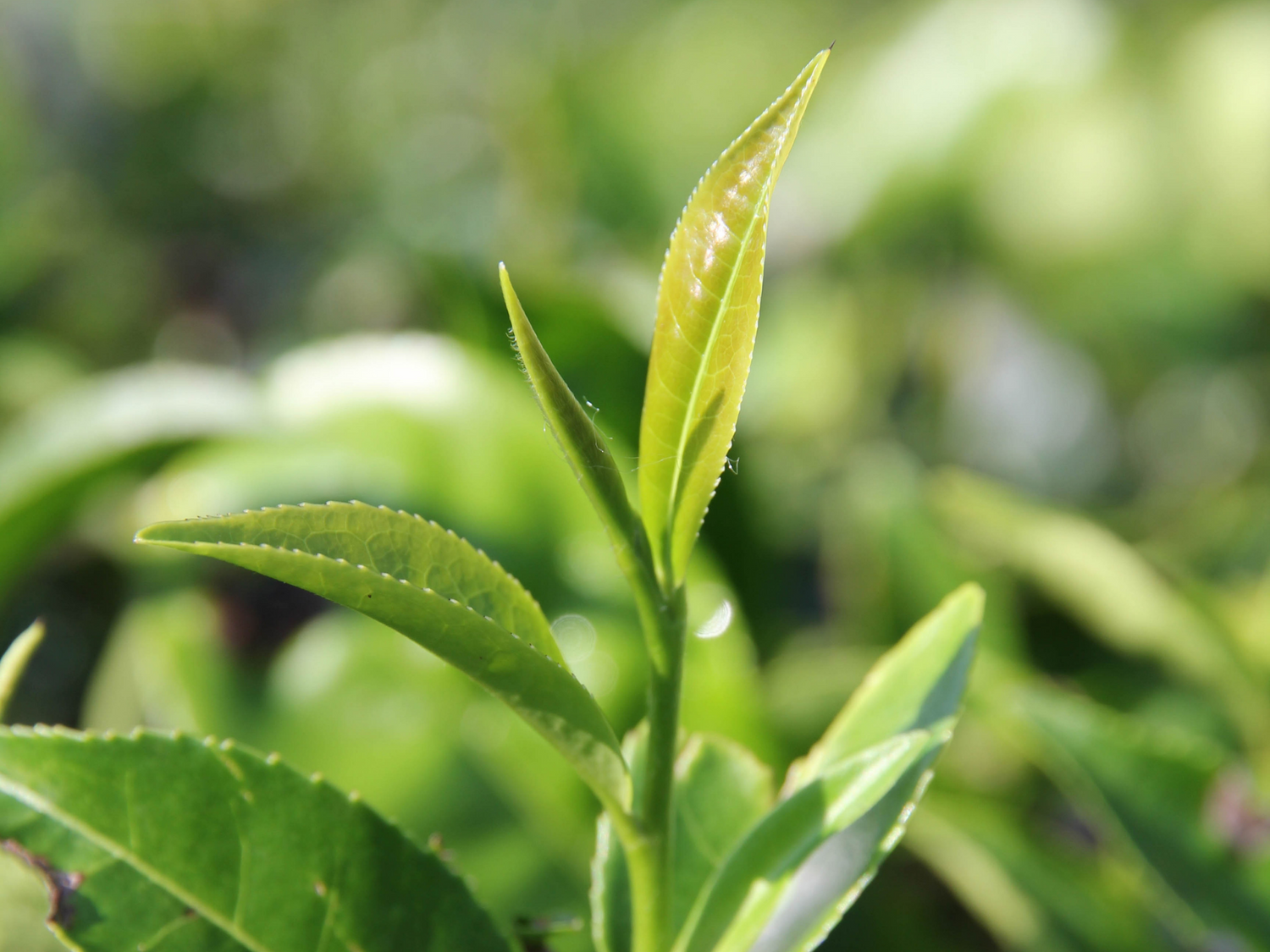What is tea made from? Introducing the Camellia Sinensis tea plant.
Tea is the second most popular beverage in the world, behind water. In 2022, 6.7 billion kilograms of tea were consumed by people around the world (1). That works out to be around 6.1 billion cups of tea enjoyed every day or 2,211 billion cups every year (2).
That is a gargantuan amount of tea!
But what’s even more astonishing is that most of us don't know an awful lot about the plant we’re imbibing, every day, when we sip our daily cup.
In this month’s blog I share an overview of the special and somewhat clandestine tea plant, Camellia Sinensis.
An ancient plant
Tea is said to have been first discovered in China way back in 2737BC by Emperor, scholar and herbalist, Shen Nung. According to legend, he was sitting under a native tree, boiling a pot of water, when some leaves fell from the tree into the pot. The Emperor drunk the infusion and experienced a wonderful state which ‘gave joy to the body and sparkle to the eyes’. He named the plant ‘cha’ which translates to ‘tea’ (3). The tree was, what we now know of as, the Camellia Sinensis (4). And, that moment, almost 5000 years ago, was the beginning of tea.
Meet the Camellia family
The tea plant, Camellia Sinensis, is a species of the plant genus  Camellia, which also includes the Camellia Japonica and Camellia Sasanqua species - the more well-known, flowering shrubs you often see in our gardens (pictured). Camellia Japonica and Camellia Sasanqua are purely ornamental and aren't used for tea.
Camellia, which also includes the Camellia Japonica and Camellia Sasanqua species - the more well-known, flowering shrubs you often see in our gardens (pictured). Camellia Japonica and Camellia Sasanqua are purely ornamental and aren't used for tea.
Camellia Sinensis is a bushy, warm-weather, evergreen tree (pictured below). If left untended, it can grow up to 30m in height. It has serrated, dark green, glossy leaves, small white flowers and seeds. All tea is made from leaves of the Camellia Sinensis species only (if the dried leaves you’re infusing aren’t from this plant, your hot drink is technically a ‘tisane’ or ‘infusion’, not tea.)

Tea plant varieties - created by nature
There are two main, naturally-occurring varieties of Camellia Sinensis. These are both used for tea.
Camellia Sinensis var. Sinensis
This variety is native to China (‘Sinensis’ means ‘from China’). Camellia Sinensis var. Sinensis is smaller than its Indian counterpart (below), both in leaf size and plant height. The leaves have serrated edges and are a lance shape. The flavour is a little more delicate than var. Assamica.
Camellia Sinensis var. Assamica
This variety is native to the Assam region in Northeast India. The leaves are also serrated but larger and more oval in shape. In wild conditions, the tree would grow about three times higher than var. Sinensis. It is less aromatic than the Chinese variety and its leaves produce infused tea that is more robust, astringent and darker in colour when fully oxidised.
A third variety, Camellia Sinensis var. Cambodiensis is not used for tea but is occasionally used to create cultivars.
Tea plant cultivars - created by humans
Below these varieties sit ‘cultivated varieties’, or more simply named ‘cultivars’. These are deliberately created by human hand through hybridisation (cross-breeding). Cultivars are formed to bring through specific characteristics – such as cold-and disease resistance – into the tea plant to suit a particular environment. The type of cultivar plays an important role in how a tea tastes and looks. Some cultivars have distinctive flavour characteristics which are then drawn out further with specific processing steps, such as the Taiwanese cultivar Jin Xuan. This cultivar has a natural creamy/milky profile and is used to create milky oolong (among other teas).
Thousands of cultivars have been created over time.

Where is Camellia Sinensis found?
Across thousands of years, tea seeds and cuttings have been transported all over the world. You can now find Camellia Sinensis growing in six continents: Africa, Asia, Australia/Oceania, Europe, North America, and South America (unsurprisingly, not Antarctica although I’m sure it is drunk there!).
While both varieties are found across the world, Camellia Sinensis var. Sinensis is more resistant to cold and is often found in cooler climates such as Japan, and Taiwan, Darjeeling (India) and Turkey in addition to China. Camellia Sinensis var. Assamica is mainly found in India, Nepal, Sri Lanka and Africa.
In New Zealand we have Zealong Tea Estate in Gordonton, Waikato, which began with only 130 Camellia Sinensis var. Sinensis cuttings imported from Taiwan and now has more than 1.2 million tea plants in their gardens.

Grow your own tea
Camellia Sinensis plants have typically been very hard to find on the retail market, but they're now starting to appear in some garden centres or online. One of my customers, Helen, is successfully growing her own Camellia Sinensis plants - she may become one of my suppliers one day! But if making your own tea feels a little daunting, they make a great garden shrub or a pretty, leafy plant to have in a pot on your deck.
~ Anna

Citations and notes:
(1) Updated June 2024 https://www.statista.com/statistics/940102/global-tea-consumption/ from the previous 2020 numbers of 6.3 billion kilograms of tea consumed each year - around 5.7 billion cups of tea every day or 2,080 billion cups every year (see note #2).
(2) This is my estimate and calculation based on 330 cups of tea per kilogram of leaves.
(3) The Camellia Sinensis Tea House. (2014) Tea, Histories, Terriors, Varieties, New York. Print.
(4) The plant wasn’t named Camellia Sinensis at the time, this didn’t happen until the early 1900’s.
Also used:
Keating, Brian R. Long, Kim. (2015). How to Make Tea; The Science behind the Leaf. Lewes. Print.
Camellia photo with pink flowers by Annie Spratt on Unsplash.
Camellia Sinensis photo in the header and body is from Bukit Sari tea garden in Indonesia.



Feb 21, 2023 • Posted by ngaire
The species name shouldn’t be capitalised – it’s Camellia sinensis.
I’m interested where you got the information that it grows to 30m – Kew only lists it to 17m and that’s for var assamica, the taller of the two. C. sinensis var sinensis is a bushy shrub and not the taller tree form that C. sinensis var assamica is.
I’m also confused about Camellia Sinensis var. cambodiensis – I don’t see it recognised by Kew. There are 4 varieties officially recognised: C. sinensis var. sinensis and C. s. var. assamica (both of which are used for commercial tea) and C. s. var. pubilimba and C. s. var. dehungensis – which are used to make tea locally in the Chinese provinces in which they grow. I’d love to see a source for Camellia Sinensis var. cambodiensis so I can learn more about it.
C. s. var. assamica is also native to Southern China – particularly the Yunnan province in China. Genetically, Chinese assamica diverged from the Indian assamica around 2800 years ago – but they do share a common ancestor.
Sep 26, 2022 • Posted by The Tea Curator
You’re welcome @Verity Thom – I’m glad you found it interesting. Anna
Sep 23, 2022 • Posted by Verity Thom
Thanks for this really and and informative blog!